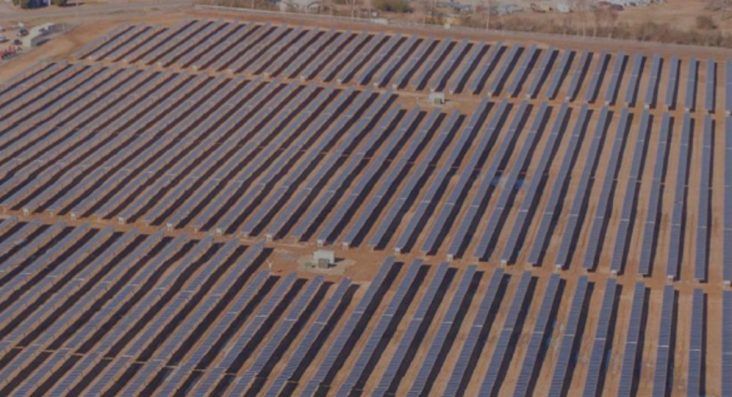Officials in Fort Smith metro open to the idea of solar power
by July 24, 2019 4:09 pm 1,176 views

Image from Scenic Hill Solar.
A growing number of Arkansas cities, counties and school districts are moving toward solar to handle all or a portion of their electricity demand. None of those are in the Fort Smith metro, but area officials are warming up to the idea.
Cities with solar power operations or have announced plans for solar include Camden, Clarksville, Fayetteville, Searcy and Stuttgart. Other governments moving toward solar include Phillips County, Yell County and the Guy-Perkins School District.
The city of Stuttgart is working with Little Rock-based Scenic Hill Solar to build a 3.15-megawatt solar power plant that will generate 100% renewable energy for its government and municipal operations. The solar power plant will save the city more than $100,000 a year. Bill Halter, CEO Scenic Hill Solar and former Arkansas Lt. Gov., said lower prices for solar equipment, the ability to lock in utility rates and the positive environmental impact of using solar are some of the reasons driving demand.
The U.S. Department of Energy reports solar power is indeed a growing source of energy. Since 2008, solar power plants in the U.S. have grown from 1.2 gigawatts (GW) to an estimated 67 GW. The 67 GW is enough to power 12.7 million average American homes, according to the DOE and the Solar Energy Industries Association (SEIA). Also, the average cost of solar panels has dropped more than 60% and the cost of a solar electric system has dropped by about 50% since 2010. However, grid integration issues, financing, land acquisition and other “soft costs” continue to be barriers to broader solar energy use, the DOE noted.
Figures from the SEIA indicate that 17,099 Arkansas homes are powered by solar, and just 0.37% of the state’s electricity comes from solar power plants. The association also reports the state has 369 jobs tied to the solar industry.
Halter declined to say if Scenic Hill is working with governments in the Fort Smith metro, but said the company is “seeing heightened and accelerated interest around the state.”
“We are talking to the public sector all over the state of Arkansas because solar power is now an economically superior solution for all of these clients,” Halter told Talk Business & Politics, adding there is no reason he can think of in which solar would be cost prohibitive for governments in the Fort Smith metro.
Van Buren Mayor Joe Hurst has talked to Halter. Hurst said they had an initial conversation about solar power before historic flooding hit the area. Flood response efforts delayed the discussion, but Hurst said he is now working to get numbers to Halter to see what is feasible.
“I let him know I was interested and would get him some numbers,” Hurst said. “If we can save money I’m interested, especially if we can help the environment, because then it’s a win-win.”
Fort Smith City Administrator Carl Geffken said the city is doing more to use compressed natural gas and electric vehicles, but said solar has not been in the mix. He said the city is open to ideas from solar companies.
“Should a firm contact the city with a viable proposal that will allow the city to consider a solar project now instead of several years from now, we would be willing to listen and work with them,” he said in an e-mail to Talk Business & Politics.
Sebastian County Judge David Hudson said the county has worked with Seattle-based McKinstry Co. to become more energy-efficient with its buildings and other operations. He said the consultants are also looking into the possibility of solar power.
“We are also looking at the 2020 budget now, so the solar discussion is of interest,” Hudson said.
The region does have a solar power plant. Arkansas Valley Electric Cooperative built a solar plant on 1.5-acres near the utilities regional office in Van Buren. Today’s Power Inc. – an AVEC subsidiary – built the array and Co-op officials said in June 2016 the upfront cost would be recovered by reducing costs for wholesale power during demand periods. The utility also plans to use the facility as a “demonstration and education tool” for members and the general public.
